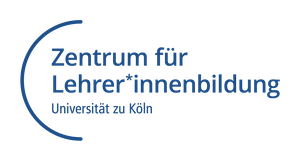Anknüpfungspunkt der Unterstützten Kommunikation
Der Unterstützten Kommunikation liegt die Annahme zugrunde, dass jeder Mensch ein Bedürfnis nach Contact us und Kommunikation, dem Mitbeeinflussen von Situationen in sich trägt. Zudem geht sie davon aus, dass jeder Mensch die Fähigkeit besitzt, sich konstruktiv weiter zu entwickeln (Kristen, 2005, 16ff.).
![]()
Ausgehend von den individuellen Kompetenzen, die eine Person mitbringt, entwickelt die Unterstützte Kommunikation individuelle Maßnahmen, die zu einer besseren Verständigung, mehr Mitbestimmung im Alltag wie auch Partizipation am gesellschaftlichen Leben beitragen sollen.
 Literatur
Literatur
- Kristen, Ursi (2005): Praxis Unterstützte Kommunikation – Eine Einführung. Düsseldorf: Verlag Selbstbestimmtes Leben.
-
Einführung 2
-
Herzlich willkommenLecture1.1
-
SelbstreflexionLecture1.2
-
-
Personenkreis Menschen mit Autismus-Spektrum-Störung 6
-
Personenkreis Menschen mit Autismus-Spektrum-StörungLecture2.1
-
Diagnostische Merkmale einer Autismus-Spektrum-StörungLecture2.2
-
Besonderheiten im VerhaltenLecture2.3
-
Besonderheiten in der Kommunikation – AllgemeinesLecture2.4
-
Besonderheiten in der Kommunikation – Joint AttentionLecture2.5
-
Besonderheiten in der Kommunikation – Zentrale KohärenzLecture2.6
-
-
Kommunikation 8
-
KommunikationLecture3.1
-
Was ist Kommunikation?Lecture3.2
-
Begriffsbestimmung “Kommunikation”Lecture3.3
-
Menschliches Grundbedürfnis nach KommunikationLecture3.4
-
Kommunikationstheorien und -modelleLecture3.5
-
Zugrundeliegendes Verständnis von KommunikationLecture3.6
-
Funktionen von KommunikationLecture3.7
-
Bedeutung von KommunikationLecture3.8
-
-
Unterstützte Kommunikation 6
-
Kommunikative Erfahrungen von Menschen mit kommunikativen Auffälligkeiten und eingeschränkter LautspracheLecture4.1
-
Anknüpfungspunkt der Unterstützten KommunikationLecture4.2
-
Was ist Unterstützte Kommunikation?Lecture4.3
-
Förderung der Kommunikativen KompetenzLecture4.4
-
Welche Kommunikationsformen gibt es?Lecture4.5
-
Zugang zu Unterstützter KommunikationLecture4.6
-
-
Unterstützte Kommunikation und Diagnostik 5
-
Herausforderungen bei der DiagnostikLecture5.1
-
Vorgehen bei der DiagnostikLecture5.2
-
Das Gespräch/Die BefragungLecture5.3
-
Die BeobachtungLecture5.4
-
Diagnostische TestverfahrenLecture5.5
-
-
Kommunikationsförderung 8
-
KommunikationsförderungLecture6.1
-
Kommunikationsförderung bei Menschen mit ASSLecture6.2
-
IntentionalitätLecture6.3
-
Intentionalität in der UKLecture6.4
-
Bedeutung der Intentionalität für UKLecture6.5
-
Intentionalität herstellenLecture6.6
-
Etablierung eines ZeichensLecture6.7
-
Intentionalität bei Menschen mit ASSLecture6.8
-
-
Modelling als Ansatz der Kommunikationsförderung 12
-
Modelling als Ansatz der KommunikationsförderungLecture7.1
-
Modelling in der Unterstützen Kommunikation – EinführungLecture7.2
-
Lernen am Modell bei regulärer SprachentwicklungLecture7.3
-
Spracherwerb bei (noch) fehlender LautspracheLecture7.4
-
Modelling als Umdenken in der KommunikationsförderungLecture7.5
-
Prinzipien des ModellingLecture7.6
-
Die Umsetzung des Modelling im AlltagLecture7.7
-
Modelling, Vokabular & ThemenfelderLecture7.8
-
Auswahl der einzuführenden WörterLecture7.9
-
Modelling in der Umsetzung als FachkraftLecture7.10
-
Modelling Schritt für SchrittLecture7.11
-
Was Sie als Fachkraft mitbringen solltenLecture7.12
-
-
Beispielvideos Modelling 9
-
Modelling Beispielvideos EinführungLecture8.1
-
Modelling Video 1Lecture8.2
-
Modelling Video 2Lecture8.3
-
Modelling Video 3Lecture8.4
-
Modelling Video 4Lecture8.5
-
Modelling Video 5Lecture8.6
-
Modelling Video 6Lecture8.7
-
Gedankensammlung zu den VideosLecture8.8
-
Modelling bei Menschen mit Autismus-Spektrum-StörungenLecture8.9
-
-
Abschluss 3
-
Überprüfung der LernzieleLecture9.1
-
SchlusswortLecture9.2
-
RückmeldungLecture9.3
-




